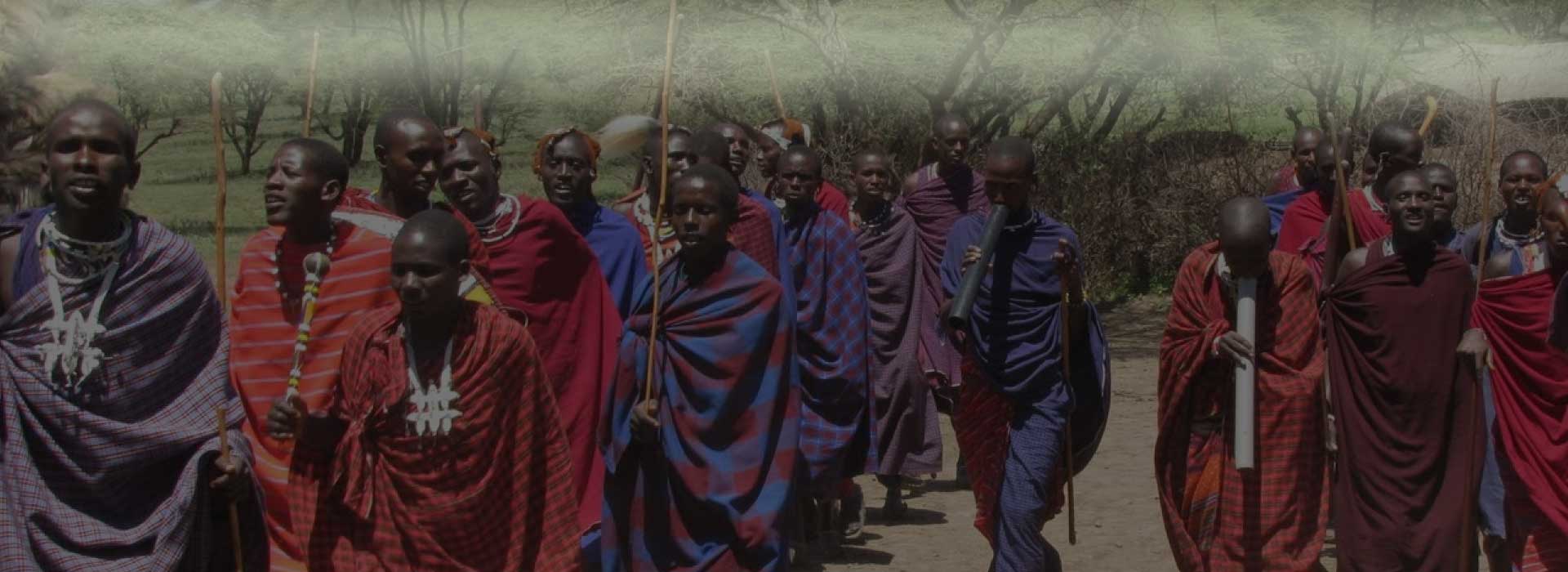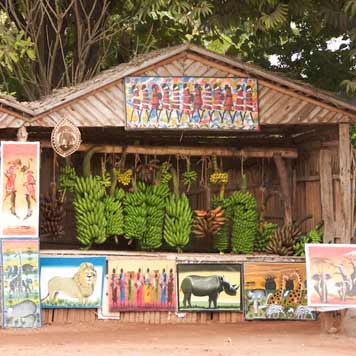
Mto wa Mbu is situated on the way from Arusha to the National Parks in Northern Tanzania, just at the foot of the Rift Valley. Mto wa Mbu is the entry-port to Lake Manyara National Park, and also conveniently on the way to Ngorongoro Crater and Serengeti, which makes it an ideal rest place for most safari travelers.
The area around Mto wa Mbu was rather dry and hardly populated until the early fifties, when the first steps were made to irrigate the area. Within a few years hundreds of acres of newly cultivable land were created. The news of the fertile lands spread rapidly through the country and from all remote corners people came to try their luck. Fruits and vegetables from all over Tanzania were introduced to the area, and within a few decades the dry and empty plains were turned into a green semi-urban center. The rapid population growth has turned this village into a melting pot of cultures. Nowhere else in Tanzania have so many tribes gathered in such a small area, and many people have still kept their traditions.
In Mto wa Mbu there are several campsites and guesthouses. In most of these places tourists can eat a meal and order a lunch box. During tours, visitors will have the opportunity of enjoying traditional cuisine prepared by local women in the village. Apart from the guesthouses and campsites in town, there are three high-quality lodges on the edge of the Rift Valley that oversee Lake Manyara National park and the surrounding area.

The guides used in these tours grew up in Mto wa Mbu, and recently finished Manyara Secondary School. They can speak English and are familiar with the area. They will be happy to tell you interesting facts and stories about the different cultures, irrigation system and the various fruits and vegetables in the area. They want to gain experience and earn a small income by showing tourists the beauty of their area. Farming tour: Starting from the market, where you visit a Chagga family producing banana beer, you walk northwards passing many different farms. On your way you get explanation about the various fruits and vegetables growing in the area. Mzee Filipo, a farmer from Kigoma, will show you his oil press and tell you about the history of irrigation in the area. Your trip ends at a farm build by the Belgium Development Organization ACT, where you can visit their sunflower production and take marvelous pictures of colorful flower fields with the Rift Valley as background.
Papyrus Lake Tour: This walk starts five kilometers north of Mto wa Mbu, where the Miwaleni waterfall that falls down from the Rift Valley has created a green oasis. Passing some small streams you walk in the direction of the Papyrus lake, from where the Rangi people collect the materials for the mats and baskets they make. On the way you can see rice farming and visit Sandawe families who still make the traditional bows and arrows for hunting. The walk can be extended with a climb to the waterfall at the Rift Valley.Balaa Hill Tour: Starting from the center you walk in the northern direction. The farmers mainly grow bananas (30 varieties) and the big leaves provide a pleasant shade. On your way you can visit some farms and get explanations about the irrigation methods in the area. Finally, you can climb Balaa Hill, “the hill of misfortune”, in about 20 minutes, and enjoy the beautiful view over the green oasis over Mto wa Mbu. On the top, the guides will explain why the hill got its mysterious name. The walk can be extended with a visit to the Njoro springs, one of the main water sources for the area and a nearby waterfall.
One Day Walk: People who like walking can combine the three half-a-day tours in a one-day walk. Starting from the Mto wa Mbu market you go via the ACT to the Papyrus Lake. On your way back to Mto wa Mbu you walk along the foot of the Rift Valley, passing the Njoro springs and the Balaa Hill.
Development Projects: The Maasai women’s group is producing energy saving stoves, that use three times less firewood and therefore help to preserve the natural forests and reduce the workload of women. The profit from the tourism program will be used for the promotion of these stoves and other development purposes in the area.